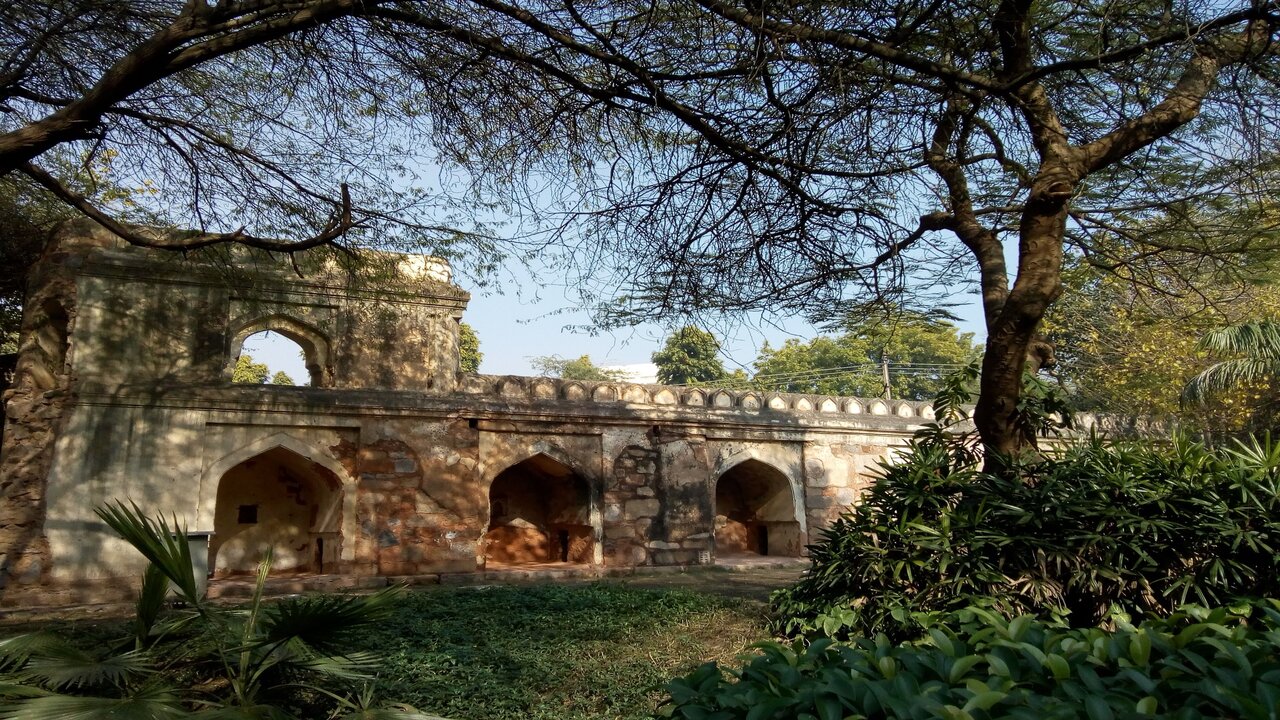Unceasingly playing a prominent role in the history of the Indian subcontinent for the past 800 years, arguably there is no city on earth with more historic mosques than Delhi. Even before the Mughals, many rulers built their capitals here and beautified them with architectural masterpieces. The remains of which lie scattered about the city–at times barely.
Like the other structures, the mosques of the pre-Mughal era lie forlorn and in benign neglect with little to no upkeep. Here are some of the most prominent examples of desolate pre-Mughal mosques.
Kalu Sarai Mosque

This 600-year-old plus structure built by Juna Shah Maqbool Telangani, Wazir of Feroz Shah Tughlaq, has been illegally occupied by squatters for years now. Some of its domes have collapsed and the family residing in it is making modifications and accretions to the heritage structure as it pleases. They may just even pull down the whole structure to build a purpose-built home in its place. Visibly, no one is stopping them from doing so.
Coordinates: 28.54206618021871, 77.20296988312094
Khirki Mosque

The grandest of all seven mosques built by Maqbool Telangani is the Khirki Masjid. It is said to be the largest roofed mosque in the world when it was built in the 14th century. It’s such a prominent monument in the locality that the area adjoining the mosque is named after it – Khirki Village.
Those living nearby have continued to expand their dwellings at the expense of the mosque’s land and the authorities merely watch in despair. As opposed to the main function that Telangani built it for, the Khirki Mosque now serves as a home for anti-socials and young couples away from the prying eyes of their respective families. Outside the mosque, the signboard has been vandalized and every mention of “mosque” on it has been haphazardly whitened out.
Coordinates: 28.531473013355, 77.21959412585349
Tughlaqabad Fort Mosque

Within the ruined fort of Tughlaqabad, built in 1321-23 AD by the founder of the Tughlaq Dynasty, Ghiyasuddin Tughlaq, lies this unique mosque that has no parallel to it in the country. The mosque has no domes–it has a sloping roof instead. Surprisingly, it still survives despite many of the original structures of the fort lost in the mists of time.
Coordinates: 28.511897475476182, 77.26318898959298
Chauburji Mosque

Most of Delhi’s pre-Mughal mosques like the Chauburji Mosque date back to the era of the Feroz Shah Tughlaq who was a prolific builder. Chauburji literally means four towers–it could be a reference to the mosque’s original four domes. During the Partition, the mosque was vandalized and illegally occupied. The encroachers have long gone yet the mosque remains deserted.
Coordinates: 28.681534332426722, 77.21524666513318
Darwesh Shah Mosque

Located within the confines of the Gulmohar Park, this Lodhi era mosque has been left to the vagaries of nature that threaten to erode its physical fabric.
Coordinates: 28.554755240067838, 77.21141685798423
Begumpur Mosque

Surrounded by arched cloisters, this sprawling mosque is believed to be the main congregation mosque of the city of Jahanpanah, which was founded by Muhammad bin Tughlaq. It is said that the architecture of the Begumpur mosque impressed Tamerlane (Taimur) so much so that he had a mosque similar to it called the Bibi-Khanym Mosque built in his capital, Samarkand. He is even believed to have taken masons from the city to build it.
Unlike Samarkand’s Bibi-Khanym Mosque that has been craftily restored, the Begumpur Mosque has been left in neglect and apathy with many of its domes having collapsed and a sizeable portion of its land encroached. It finds itself in a horrid state despite the fact that it has been under the purview of the ASI since 1928.
Coordinates: 28.539183657172043, 77.20603881183953
Madhi Masjid

Rarely visited, save for the odd history aficionado, the Lodhi era mosque sees plasters that cover its sturdy stone walls fall with each passing day. Though abandoned, the place is a photographer’s delight owing to its breathtakingly beautiful qibla wall that is punctuated with alcoves.
Coordinates: 28.514843672265442, 77.18460464040885
Mubarak Shah Mosque

Located a stone’s throw away from the tomb of Mubarak Shah, the mosque stands wedged between residential buildings and shops. It is one of the rare mosques built by the elusive Sayyids that still survives. On a visit to it, expect to see buffalos roaming in its courtyard and empty beer bottles strewn about its prayer chamber. The loss of its physical fabric is so great that it may soon become unsalvageable.
Coordinates: 28.57242762610085, 77.22222691140468
The author, Rayhan Mirza is a travel writer and an independent journalist. His Instagram handle is Mosques Of India.
Related
Rayhan Mirza is a travel writer and an independent journalist.












































